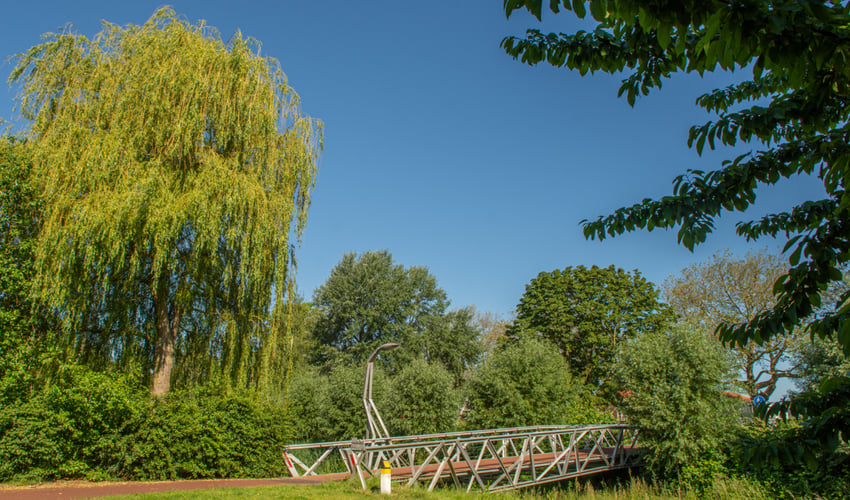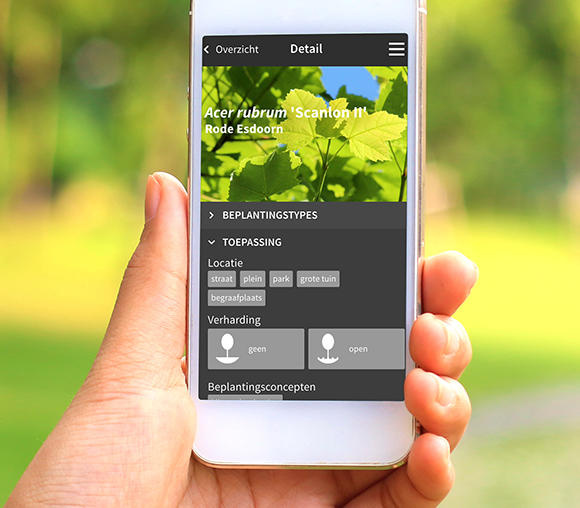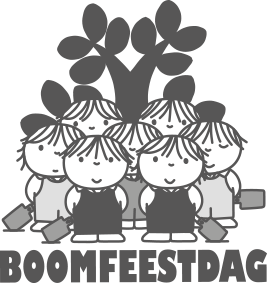More tree canopy volume for a healthier living environment

Trees have a major impact on our living environment. They are not only beautiful to look at, but also provide numerous benefits to their environment. The bigger a tree, the more ‘services’ it provides at the same time if it is in the right growing location. As a result, one large tree can sometimes contribute more than 20 small trees combined. The new National Tree Standard from the Standard Institute on Trees provides a clear and measurable goal for a greener and healthier living environment. Planting mature, large trees makes it easier to meet this standard. In this article, we explain the value of large trees and what to look out for when choosing a tree over 8 metres tall.
More tree canopy volume for a healthier city
It is well known that a large tree provides more ecosystem services than a small one. But what is the minimum tree canopy volume required? To answer this there are several initiatives, directives and policies in Europe aimed at increasing the number of trees and green space in urban areas. In the Netherlands they have now issued the New National Tree Standard. The “Norminstituut Bomen” (Tree Standard Institute) provides the following guideline: 2.2 m³ tree canopy volume per m² of land area. This standard provides a clear and measurable goal for creating a greener and healthier living environment. The National Tree Standard is still relatively recent, but some progressive municipalities and organisations have already started applying or integrating it into their policies and projects. Especially when it comes to redevelopment projects and when planning new residential areas, or as an integration in climate adaptation strategies. Provinces are also working with local municipalities to use the national tree standard for landscape projects and infrastructure planning. This looks at the contribution of trees to biodiversity and climate goals.
Guidelines within the tree standard
Associated with the national tree standard is Cecil Konijnendijk's 3-30-300 rule. This rule states that every resident should be able to see at least 3 trees from their home, that tree canopy cover in a neighbourhood should be at least 30%, and that there should be a green space at most 300 metres away. A high tree canopy volume directly contributes to achieving that 30% canopy cover, which increases the liveability and health of urban areas. Within this, Santamour's 10-20-30 rule can also be adhered to. This guideline focuses on biodiversity within urban tree populations to reduce pests and diseases. Trees with a high crown volume are often ecologically valuable, but to reduce the risk of disease, their diversity should be managed according to this rule. Thus, Santamour's rule protects against monocultures and Konijnendijk's encourages the planting of large trees in a balanced, healthy urban environment.
The value of a large tree
At Nursery Ebben, by a large tree we mean trees with a trunk circumference of 60 to 140 cm. These trees are about 8 metres and taller. The volume of trees is related to the amount of services they provide to their surroundings. Trees with a larger trunk diameter have a larger woody biomass, allowing them to store more carbon dioxide than smaller trees. Similarly, trees' ability to intercept precipitation and air pollutants increases with the size of their crown and total leaf area. Tree canopy volume in cities is important for several reasons, notably in terms of biodiversity, climate adaptation and tree health, as well as ecological, economic and social.
Large trees within CSRD reports
Companies also benefit from planting large trees. Companies that contribute to increased tree canopy volume can include this in their CSRD reports. The CSRD (Corporate Sustainability Reporting Directive) asks companies to report comprehensively on their sustainability initiatives, including their impact on biodiversity and climate. By increasing tree canopy volume, companies can contribute to climate goals, strengthen biodiversity and reduce their own carbon footprint. This can be done, for example, by investing in planting trees on their own sites or in urban areas around their offices and factories, which directly contributes to increasing tree canopy volume.
In addition, companies can partner with municipalities and other public bodies to contribute to local greening and tree-planting initiatives. This could be through sponsoring local reforestation projects, urban greening or contributing to existing initiatives for greening streets, parks and squares or to sustainability and carbon reduction plans.
How to choose a suitable large tree?
First, growth space above and below ground should be taken into account, such as available root space and obstacles like buildings or cables. In addition, the soil type and climatic conditions of the site are important. Also consider the sun and shade requirements of the tree. Furthermore, the maintenance and final size of the tree should be considered, including the impact on surrounding infrastructure and biodiversity.
Taking into account the specific characteristics and limitations of a tree species is very important. If a wrong choice is made when selecting a tree, any benefits it could have offered are nullified. A tree is then forced, as it were, to function in a situation it cannot cope with. Sometimes choosing a non-native tree turns out to be the best option. It may be good to diversify the tree population to gain some kind of resilience against climate change, diseases, pests and so on.
Online tree encyclopaedia for the right choice
Applying the New Tree Standard thus helps ensure the quality and quantity of trees in urban areas in the Netherlands, with a focus on biodiversity, climate adaptation and tree health. Large trees of eight metres and taller on average contain more leaves and a larger crown, giving them an edge when it comes to increasing tree crown volume in cities. The Tree Ebb is a handy online tree encyclopaedia and tool for finding the ideal large tree for the right location.












